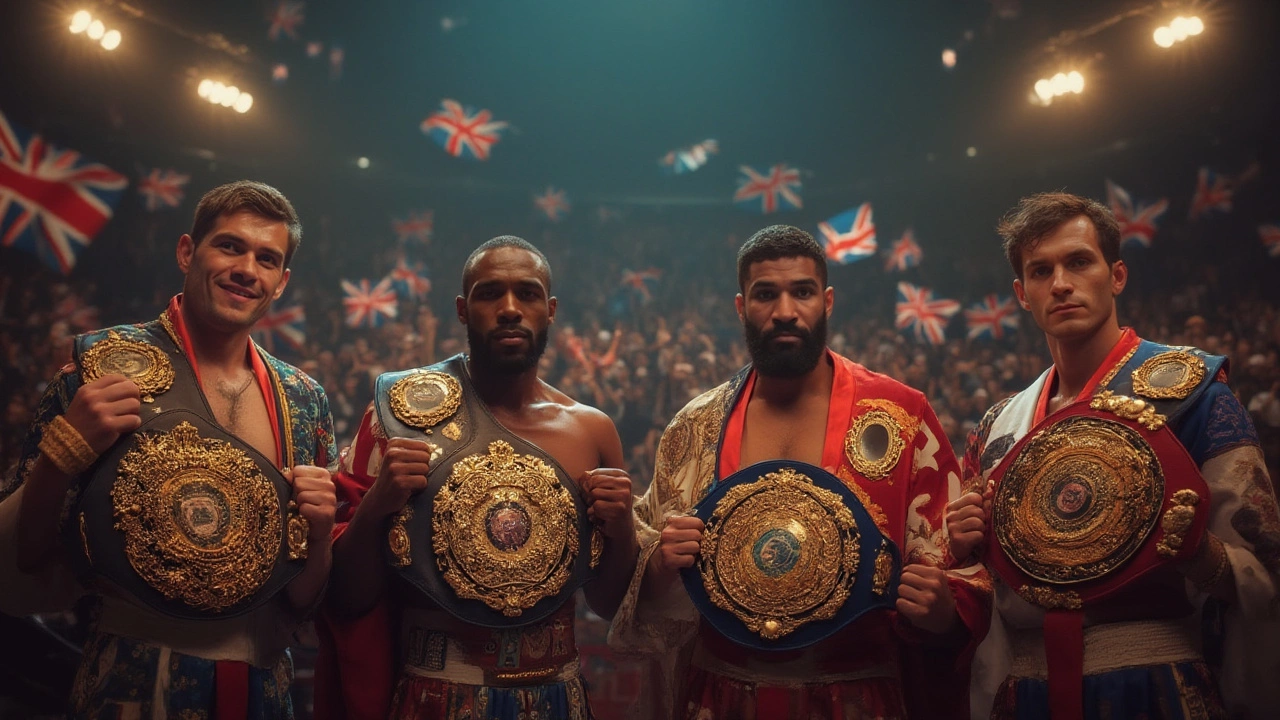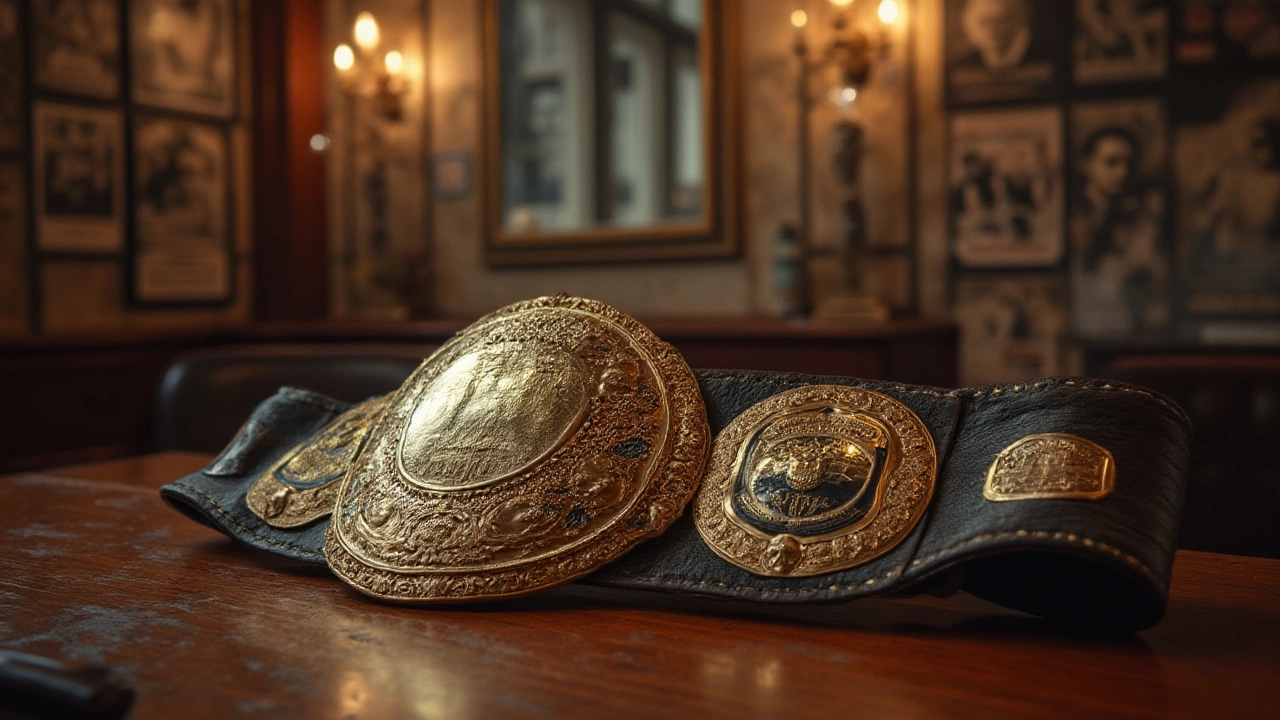Boxing Titles Explained: The Four Major World Championship Belts

Ever wonder why boxing’s biggest stars parade around weighed down by enough gold and green leather to make any rapper jealous? It’s not about fashion—it’s about the four most coveted world titles in boxing. Each belt means power, money, and legacy. But holding all four? That’s so rare it’s almost mythical. Welcome to the wild, tangled world of boxing titles where politics, pride, and punching power all crash together in a way that only this sport can deliver.
The Four Major Boxing Titles: WBA, WBC, IBF, and WBO
When you hear boxing commentators shouting about "undisputed" champions, they’re talking about someone who’s grabbed all four major world titles in their weight class. Those belts come from the WBA (World Boxing Association), WBC (World Boxing Council), IBF (International Boxing Federation), and WBO (World Boxing Organization). Having just one is a career achievement. Holding them all—it’s like boxing Olympics and Super Bowl rolled into a single, bruising feat.
The oldest of the bunch, the WBA, dates back to 1921—originally called the National Boxing Association (NBA, no, not basketball!). The WBC burst onto the scene in 1963 in Mexico City, luring champions with its blingy green belt and a knack for stirring up drama (just Google some wild WBC rulings...). The IBF popped up next in 1983, founded by Bob Lee after a high-voltage break from the WBA. Last came the WBO in 1988—starting out as the "young upstart" but now firmly established, especially since the 2000s, when fighters like Oscar De La Hoya and Wladimir Klitschko put its belt front and center.
Each organization has its own president, rules, mysterious rankings, and unique title defenses. Politics? Oh, lots of it. Sometimes one body recognizes a champ, but another doesn’t. That’s why it’s not uncommon to see two champs with different belts in the same weight division. Here’s a quick look at each belt’s logo and founding year in a way that’s actually digestible:
| Belt | Founded | Headquarters | Notable Champs |
|---|---|---|---|
| WBA | 1921 | Panama City, Panama | Roberto Durán, Floyd Mayweather Jr., Lennox Lewis |
| WBC | 1963 | Mexico City, Mexico | Mike Tyson, Canelo Alvarez, Sugar Ray Leonard |
| IBF | 1983 | Springfield, New Jersey, USA | Bernard Hopkins, Anthony Joshua, Larry Holmes |
| WBO | 1988 | San Juan, Puerto Rico | Manny Pacquiao, Terence Crawford, Oleksandr Usyk |
It’s not unusual for fighters to "unify" two or three belts, but count on some serious behind-the-scenes negotiation—or even feuds—when someone wants to collect all four.
Why Are There Four Boxing Titles? The History and Rivalries
If you ever feel confused by all the belts and acronyms thrown around, you’re absolutely not alone. Here’s how we landed in a world with not one but FOUR championship titles in each boxing division.
Once upon a time (think Jack Dempsey, Joe Louis era), there was essentially just one world champion. But with so much money at stake, and more TV cameras, promoters, and national associations popping up, everyone wanted their own champ. That’s when the splintering began. The WBA and WBC jockeyed for "official" status in the ‘60s. Fights went to court. Promoters took sides. The IBF and WBO joined the wild ride—originally dismissed as fringe outfits until mega-stars began fighting for their shiny, new belts. Even then, the big US networks like HBO and Showtime only recognized the IBF and WBC for many years.
But as more fighters crossed promotional lines and big names held multiple belts, things changed. By the 2000s, the WBO was just as respected. Now, most fans accept all four as legit, though the arguments over rankings and champions never end. Rematch clauses, mandatory challengers (the #1 ranked contender the champ MUST face), and "stripping" champs of their belts for not following rules make the title scene just as dramatic as the fighting inside the ring.
Fun fact: Only seven male fighters have ever become "undisputed" with all four major belts since the IBF and WBO became universally recognized. Claressa Shields made history for women in 2021 by holding all four in two weight classes. Rare air, seriously.

What Makes Each Title Unique?
So, they’re all world titles, but are these belts just copy-pastes in different colors? Nope. Each sanctioning body carves out its own identity—sometimes in ridiculously subtle ways, sometimes with big, splashy moves.
The WBA is all about tradition—it loves to recognize "Super" champions, "Regular" champions, and occasionally, "Interim" champions in the same weight class. Confused? So is everyone else. But WBA Super has the most prestige, often reserved for big-name unifiers.
The WBC has the flashiest belt and the strictest safety rules. They’re the first to mandate 24/7 drug testing and created the “Clean Boxing Program.” They will strip (remove) a champ if they don’t comply, and they hand out some of the most out-there special edition belts—Aztec gold, Dia de los Muertos, you name it.
The IBF has the reputation for being the strictest with their mandatory challenger system. If you’re the #1 IBF contender, the champion must fight you by a deadline, or they lose the belt. This has led to some surprise upsets and caused champs to ditch the IBF title if a bigger money fight lies elsewhere.
The WBO is more international. Early on, its titles were filled mainly by European, Puerto Rican, and Asian fighters. It took a while to get traction in the US, but stars like Manny Pacquiao and Joe Calzaghe made it a must-have for any legacy chase.
Check any champ’s resume and you’ll see which belt they tried for first, then maybe went “belt hunting” later to collect the whole set. People still argue—sometimes for years—over which organization has the best champions or fairest rankings. But for the fighters, any of the four belts spells a giant payday—and the ability to call themselves a world champion. Not a bad gig.
How Do Fighters Win, Lose, or Defend Boxing Titles?
Winning a belt isn’t just about the knockout. Each group sets its own contenders, often with "elimination" fights where two top challengers have to slug it out for the right to face the champion. Win that fight? You’re called the “mandatory”—and the champ can’t dodge you unless they vacate (relinquish) their shiny strap.
Champions defend their belts in scheduled title fights. Failing to defend within a time limit or refusing a mandatory challenger gets them stripped. Sometimes, a champ beats another champ from a rival group. That’s a “unification” bout—and the winner walks away stacking belts, sending fans into a frenzy. Double belts? Instant legacy points.
But nothing’s ever simple. Managers, promoters, and networks stand between fighters and the fights fans actually want. Sometimes, a champ will drop (vacate) a belt just to go after a bigger payday. Then there’s the wild card of "interim" titles. If a champion is injured or tied up with other obligations, an interim champ may be crowned—and then later, the two must fight to settle the issue. You might joke that there are more belts floating around than actual fighters (and you wouldn’t be far off!).
If you’re a fan who wants to keep up, pay attention to official organization websites or the belts the ring announcer calls during intros. Want to watch a bit of boxing history in motion? Look for a fight labeled “undisputed.” Those are the nights legends are made, and boxing’s alphabet soup of titles creates fireworks like nowhere else in sports.
